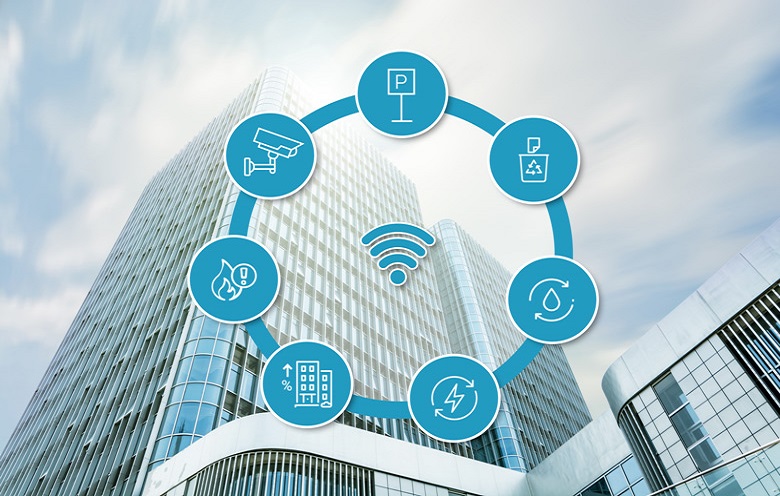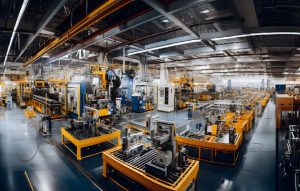Here’s a truth: many in the real estate industry don’t really understand what a ‘building management system (BMS)’ is. They may think that ‘BMS’ is installed in a building to control and monitor its mechanical and electrical functions and mainly to cut electricity consumption. That is correct but not the complete truth. Today, when the customer experience is everything with multiple touchpoints, various interaction windows and a number of engagement options – it’s fair to ask: is your building management system fulfilling today’s tenants’ demands?
Whether your tenants are any company’s employees, hotel guests, or students at the campus, it’s clear that they are becoming more demanding. It’s not just about a desk and a chair anymore. They want to work, stay and learn in buildings that support their productivity, sustainability, and connectivity needs.
Let’s take a closer look at the three types of tenants mentioned above and identify specifically what they look for in buildings and why their needs should be important to business owners or facility managers.
Employees:
They want always-on access to the internet for all their mobile devices. They also want to control their working environment to ensure the most productivity possible. Imagine if you or your employees could work in an environment where lighting and HVAC settings are tuned exactly the way they are required. Won’t that create a better occupant experience?
Hotel guests:
They look to make their stay as memorable as possible. Is your hotel providing services and technology of a 21st century hotel? To understand what a 21st century hotel means, have a look in this video:
College students:
Today’s students are connectivity savvy. They are part of a highly connected society and expect classrooms, recreation facilities, dormitories, dining services and athletic amenities with internet access at all times. The reality, however, is most existing classrooms, lecture halls, or any other infrastructure at colleges and universities have not been designed with mobile devices and laptops in mind.
According to the Center for Sustainable Systems, University of Michigan’s, “Commercial Buildings Factsheet,” the U.S. has 5.6 million commercial buildings, 72% of which are more than 20 years old. The problem is the internet was barely a concept back in the 1990s. So, many of these older buildings certainly don’t have the cable and connectivity that today’s tenants demand. They may have been updated in fractions over time, but the newer systems most likely have not been integrated with the older ones, which may cause all sorts of havoc – and unnecessary costs. That’s why a legacy BMS is not enough.
Let’s now see how the Internet of Things (IoT) works as a mover.
The word IoT conjures up an image of sensors, gateways and cloud. That’s exactly how IoT works as a mover for the legacy BMS.
Sensors
It is a well-known fact that in 2004, the average sensor cost was $1.30. It is expected that the average cost will be $0.38 per sensor in 2020. However, the cost of a full BMS installation has not resulted in a significant decrease. The average cost per square foot to deploy a traditional BMS is at least $2.50 and can be as high as $7.00 per square foot. For a building of 100,000 square feet, it is equivalent to at least $250,000. Recovering the cost of a BMS installation often takes four years with this installation cost. And the irony is that a traditional BMS has a 7-14 year lifecycle.
That’s why, to achieve significant ROI in the least amount of time, building owners need a cost-effective method to acquire data even from the smallest equipment.
Connectivity
Seeing a building with devices from various manufacturers is natural. And it is also evident that a facility manager or owner expects their BMS to function effectively. Interoperability between equipment is a key there, attaining which is a headache for many. It’s just because disparate equipment developed by different firms doesn’t speak the same language. It’s like placing three people in a room that all speak different languages and expecting them to work on a research paper collaboratively.
This is where proprietary protocols come into play. Ethernet/IP, XML, KNX, BACnet, Modbus and LonWorks are some examples of the common protocols, agreed by device manufacturers, which are currently in use. By embracing these standard protocols, any new device can work within a BMS. But what about existing buildings and their old equipment?
Buildings and facilities are facing a challenge with a mix of old and new equipment. While building owners and facility managers might want to embrace a BMS and the benefits it would deliver, they struggle to combine old equipment’s proprietary protocols with the standard protocols of new equipment. Gateways emerged as a solution to this problem.
Gateways translate effectively. They enable devices to communicate using different protocols. Introducing a gateway to legacy equipment is like adding a translator to that room with three people who all speak different languages. They can now actually work on and complete that research paper with someone to translate – although it would likely be a tedious process.
Using gateways, building owners and facility managers are now able to manage all of their equipment – including legacy equipment and new equipment that embrace standard protocols.
So, from here, where do we go now?
To the cloud
Take data from the equipment and carry it to the cloud. By cloud-enabling devices and BMS systems, building owners and facility managers can remotely manage a variety of building systems from anywhere. They can even manage and monitor systems and devices in multiple buildings from one location. This can be extremely useful for organizations managing multi-building campuses, or organizations owning or managing multiple buildings in different locations.
Besides this, today’s IoT platforms also enable third-party analytics software applications to optimize the building’s performance at its peak. With IoT, traditional BMS will also integrate to any building system, facility management systems (preventive maintenance, work orders, inventory, etc.), business systems, smart grids, and external data such as weather and energy markets.
With this, the efforts for modernizing a building with IoT will not only drive improved financial performance and operational efficiency but also provide a win-win for tenants, building owners and facility managers.









